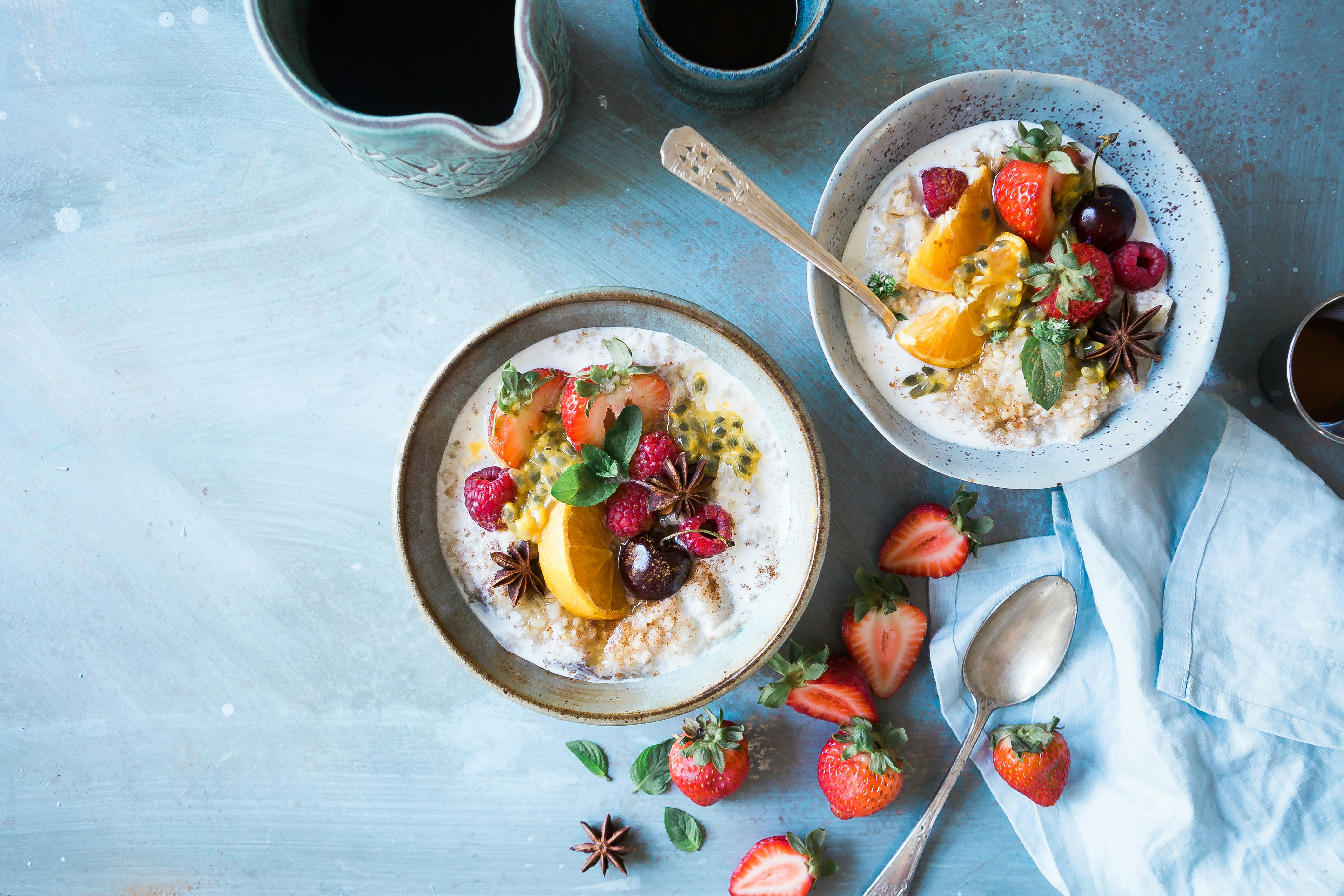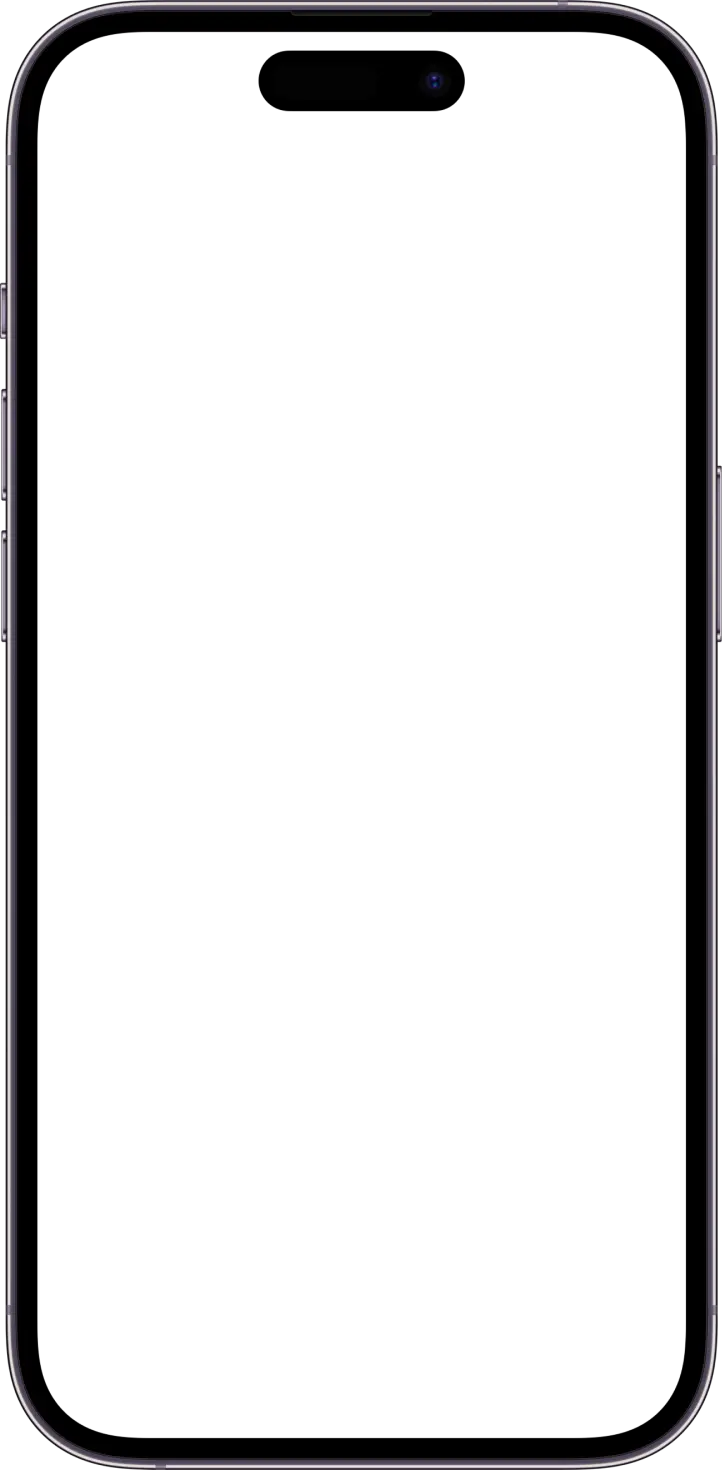Losing weight and gaining muscle moves far beyond just looking suitable for summer or fitting into a wedding dress. This process can significantly enhance your overall health. For example, reducing excess fat lowers your risk of developing diabetes, heart disease, and certain cancers.
Furthermore, gaining muscle boosts your metabolism, reduces the likelihood of injuries, and promotes healthy aging. So, What are macros and micros? Understanding macros and micros is crucial to lose weight and gain muscle. This guide will provide valuable insights to help you achieve your goals, such as counting calories faster with AI.
To help you reach your objectives, we’ll introduce DietAI’s solution, the AI calorie counter. This tool can help you count calories faster to achieve your goals and enjoy the process.
Table of Content
Can You Lose Weight and Gain Muscle at the Same Time?

This is possible through a process called body recomposition. Body recomposition refers to changing your fat mass to lean mass ratio, losing body fat, and gaining muscle mass. The goal of body recomposition is to lose fat and gain muscle simultaneously, unlike the traditional approach of "bulking and cutting," in which you intentionally put on a lot of weight first (muscle and fat) and then go through an intense calorie deficit to lose the fat and reveal the muscle underneath. Body recomposition isn't about weight loss; it's about fat loss.
On a body recomposition plan, you may maintain your current weight or even gain weight -- muscle is denser than fat, so this is expected. During body recomposition, what changes, instead of weight, are your physique. As you progress through body recomposition, you may notice changes in your body, such as an overall firmer look or that your clothes fit differently. You may gain weight, but have a more petite physique, at the end of your body recomposition program.
For example, I weigh the same now as before exercising and eating healthy. I wear smaller clothes, however, and my body has more muscle tone than before. I also feel much stronger than before I began a strength training program (an aesthetic benefit to body recomposition). So you can ditch the scale, because it doesn't differentiate between fat loss and muscle loss, and weight loss isn't the primary goal with body recomposition.
Recomposition Takes Time
Because you're trying to do two things simultaneously, lose fat and gain muscle, you can't treat a body recomposition plan like a fad diet. Healthy weight loss and muscle gain take a long time on their own: Put them together and you're in it for the long haul. The slow, steady process of body recomposition offers sustainable results, so you'll enjoy your new physique as long as you maintain those habits.
Related Reading
• Do Minerals Have Calories
• How Long in a Calorie Deficit to See Results
• How to Use a Food Scale to Lose Weight
• Can You Eat Pizza on a Diet
• Do Carbs Make You Fat
• Why Am I Not Losing Fat in a Calorie Deficit
• What Are Net Calories
• Is the Fitness App Accurate
• How Many Calories Below Bmr to Lose Weight
Benefits of Body Recomposition

Build Muscle Mass to Boost Your Strength and Health
Many people hesitate to build muscle while losing weight because muscle is denser than fat. This can lead to a weight “plateau” or even a gain on the scale. However, gaining muscle is critical for reaching your aesthetic goals and staying healthy. Building strength helps you both in and out of the gym, increasing your daily caloric burn since muscle tissue uses more energy to maintain.
Moreover, maintaining muscle mass as you age is crucial, since studies show that more muscle protects against certain diseases like cancer and is even linked to a longer lifespan. Body recomposition requires strength training instead of traditional weight loss methods focusing solely on caloric deficits, which can lead to muscle loss.
Less Body Fat Means Reduced Disease Risk
When most people say they want to lose weight, they typically discuss reducing their body fat percentage. Excess body fat can cause inflammatory responses that lead to a host of metabolic and chronic diseases like heart disease and type 2 diabetes. It can also adversely affect your body’s structure and come with conditions like sleep apnea and gastrointestinal reflux disease.
Instead of general weight loss, body recomposition focuses on getting rid of excess body fat rather than losing fat and muscle simultaneously. By targeting body recomposition, you’re addressing the root of the problem.
Body Recomposition: Achieve True Physical Health
Weight alone doesn’t tell you the whole story about your health. When many people are ready for a physical change, their initial goals are centered around reaching a healthy or “ideal” weight, and they usually base that on their Body Mass Index (BMI). While BMI can give you an idea of whether you’re in the healthy weight range for your height, it doesn’t give you the whole story about how healthy your body is.
BMI doesn’t consider what contributes to that weight, which can shield some underlying health issues. For example, some people can be “skinny fat,” meaning that they are within their normal BMI range but still have too much fat tissue. Individuals who fall under this category are at risk for obesity-related health issues like cardiovascular disease and Type 2 diabetes, even though their scale may indicate a healthy weight.
The opposite can also be true, where athletic people with a lot of healthy muscle mass can be placed in the “overweight” category. At the same time, their body composition indicates that they are in great physical shape. Knowing your body composition gives you a better picture of your health. It indicates whether or not your fat tissue, the genuine health risk, is where it should be.
Body Recomposition Can Lead to a Better Mentality Around Health
Focusing on weight loss isn’t anything new, but focusing purely on weight loss can lead to unhealthy habits and focus. Traditional weight loss methods generally mean cutting your caloric intake and focusing on cardio to reduce your net calories further. However, focusing on calories alone can lead to extremes, which isn’t good for your health in the long run.
You can’t take shortcuts like starving yourself when it comes to body recomposition—an extreme, restrictive diet isn’t help you out here because you need the proper nutrition to build muscle while burning fat. Body composition goals also mean you aren’t fixated on your weight alone, which can be good.
Progress can also mean building muscle and losing inches, neither of which will show on a traditional, weight-only scale. Building muscle is a confidence booster because, quite simply, it looks good and can get you closer to your aesthetic fitness goals. So reaching your body recomposition goals is a great way to reach your end game goal without compromising your physical or mental health.
DietAI transforms calorie counting with our AI calorie counting app. Take a picture of your food, and our app instantly analyzes your meals from a simple photo, delivering accurate calorie and macro information without manual logging.
Beyond photo recognition, the app provides comprehensive progress tracking, personalized nutrition insights tailored to your goals, and convenient barcode scanning for packaged foods. Download now to effortlessly track your calories and macros with DietAI, the AI-powered app that makes logging meals as simple as snapping a photo. DietAI can help make nutrition tracking effortless by eliminating the tedious aspects of traditional food journaling. Download today for 80% off!
How Does Body Recomposition Work

Body Recomposition: What It Is and How to Achieve It
Body recomposition refers to changing your body's fat and nonfat mass ratio, specifically losing and gaining muscle. While this is a common goal for many people, body recomposition is complex and unique to each individual. Unlike traditional weight loss methods that focus solely on losing pounds, body recomposition aims to improve your overall health by changing your body’s composition, specifically reducing fat while increasing muscle. Achieving this goal can drastically improve athletic performance and change how your body looks and functions.
How Body Recomposition Works
Body recomposition truly depends on your specific health and fitness goals. Unlike traditional weight loss methods, such as very low-calorie diets or periods of intense cardio exercise, there's no real protocol for body recomposition, but there are basic guidelines.
To successfully change your body composition, you need
Cardiovascular exercise for fat loss,
Resistance (weight) training to build muscle,
Overall decrease in calorie consumption to lose fat,
Increased protein intake to promote muscle formation.
How to Lose Fat
Fat loss ultimately comes down to your calorie maintenance. To lose fat, you must eat fewer calories than you burn. Cardiovascular exercise, combined cardio and resistance exercise, and a healthy diet still stand as the best fat loss technique; there's no way around the science. Losing fat safely and sustainably also means having realistic goals and not depriving your body of the nutrients it needs. Disordered eating habits are never worth the risk.
How to Build Muscle
To build muscle, focus on two main factors: weight training and protein consumption. Strength training is essential to changing your body composition. Your muscles won't grow if you don't challenge them. You can't build muscle without a caloric surplus, so you must eat more calories than you burn to promote muscle growth. While all macronutrients are essential, protein is necessary for building muscle. Without enough protein, your body will struggle to repair the muscle tissues broken down during weight training.
Studies show that a high-protein diet can help people lose fat and gain muscle simultaneously. Research shows that consuming more protein than you usually might while in a calorie deficit can help preserve your lean body mass (aka muscle mass) better than being in a calorie deficit without changing your protein intake. In people who have already been following a strength training program, increasing protein intake and following a heavy weight-lifting routine leads to improvements in body composition.
Related Reading
• Carnivore Macros for Weight Loss
• How to Track Calories When Eating Out
• Weight Watchers vs Calorie Counting
• Macros for Mediterranean Diet
• How to Stick to a Calorie Deficit
• How to Track Alcohol Macros
• Macros for 1200 Calorie Diet
• Intermittent Fasting and Macros
• Macros for Pcos Weight Loss
• Paleo Macros
5 Tips for Losing Weight and Gaining Muscle at the Same Time

1. Track Your Intake With DietAI
Counting calories and tracking macros is vital for losing fat and gaining muscle. DietAI transforms calorie counting with our AI calorie counting app. Take a picture of your food, and our app instantly analyzes your meals from a simple photo, delivering accurate calorie and macro information without manual logging.
Beyond photo recognition, the app provides comprehensive progress tracking, personalized nutrition insights tailored to your goals, and convenient barcode scanning for packaged foods. Download now to effortlessly track your calories and macros with DietAI, the AI-powered app that makes logging meals as simple as snapping a photo. DietAI can help make nutrition tracking effortless by eliminating the tedious aspects of traditional food journaling. Download today for 80% off!
2. Prioritize Protein
When you want to build muscle, the right diet matters; a balanced diet rich in whole foods, such as fresh produce, healthy fats, complex carbohydrates, and protein, works for everyone, regardless of fitness goals. People trying to improve their body composition must focus on increasing their protein intake. Studies show that a high-protein diet promotes muscle growth. To do this, it is recommended that protein sources be distributed evenly throughout each meal. Protein-rich foods like eggs, poultry, and dairy products are recommended.
3. Choose the Right Exercises
Resistance training should be at the center of your workout plan. Balance this training with other exercises like walking, running, cycling, swimming, or yoga. One practical approach is dose-response training. Research has shown that you should do five sets of 10 repetitions per resistance exercise to promote body composition changes.
Choose between multi-joint or single-joint exercises. Multi-joint exercises include bench presses, deadlifts, squats, lat pull-downs, and seated rows. Single-joint exercises are bicep curls, dumbbell flies, and calf raises. Both types can reduce body fat and increase muscle mass.
4. Movements Work
You do not have to go to a gym. Some of these movements can be done with your bodyweight, a resistance band, or hand weights:
Bent-over row (back/biceps)
Bicep curls (biceps)
Crunches (core)
Deadlift (glutes/hamstrings)
Front raise (shoulders)
Kickbacks (triceps)
Lateral raise (shoulders)
Lunges (legs)
Planks (chest/triceps/core)
Pushups (chest/triceps)
Choose a few exercises. Perform them like a circuit: Do each exercise about 10 times, with a short break between them. Aim to complete three sets. As you get accustomed to resistance training, aim for five sets with less rest in between.
5. Track Your Progress
Track your body's circumference measurements rather than focusing on the number on the scale. You should see the most changes in your waist and stomach measurements. There are other accurate ways to measure your body composition. These include Dual X-ray Energy Absorptiometry (DEXA), Bod Pod, and hydrostatic weighing.
These machines can be found in medical facilities and exercise science laboratories. They tend to be expensive, but your insurance may cover them. You can also use an app to track how much protein you eat, water you drink, and whether you are meeting your calorie goals. You can also journal my exercise habits to see how consistent I am and what is and is not working.
Download DietAI Today for 80% Off!
Macros, or macronutrients, are nutrients the body needs in large amounts to provide energy, support metabolism, and maintain structure in the cells, tissues, and organs. There are three main types of macros: carbohydrates, proteins, and fats. Each type serves a different purpose in the body, affecting health, body weight, and body composition differently. For example, protein is essential for building muscle, while carbohydrates provide energy for workouts. Fats, on the other hand, help support cellular function and hormone regulation.
Consuming these macronutrients in the right amounts is essential for optimal health. What that looks like will vary from person to person based on individual goals, preferences, and existing health conditions. However, for most healthy adults, protein should comprise about 10 to 35 percent of total daily calories, carbohydrates should comprise about 45 to 65 percent, and fats should account for roughly 20 to 35 percent. Eating within these ranges can support both physical and mental health.
What Are Micros?
Micronutrients are vitamins and minerals the body needs in smaller amounts to support myriad functions, including metabolism, immune function, and bone health. Unlike macronutrients, micronutrients do not provide energy (or calories), but they are essential for human health and performance. There are two main categories of micronutrients: vitamins and minerals.
Vitamins are organic compounds that come from plants and animals. They support various bodily processes and help maintain homeostasis. Minerals are inorganic compounds that also support a variety of functions in the body. B vitamins and minerals are found in foods, particularly unprocessed foods. A diverse diet can help you get enough micronutrients to support your health.
DietAI transforms calorie counting with our AI calorie counting app. Take a picture of your food, and our app instantly analyzes your meals from a simple photo, delivering accurate calorie and macro information without manual logging.
Beyond photo recognition, the app provides comprehensive progress tracking, personalized nutrition insights tailored to your goals, and convenient barcode scanning for packaged foods. Download now to effortlessly track your calories and macros with DietAI, the AI-powered app that makes logging meals as simple as snapping a photo. DietAI can help make nutrition tracking effortless by eliminating the tedious aspects of traditional food journaling. Download today for 80% off!
Related Reading
• Vegan Macros
• Endomorph Macros for Fat Loss
• Hitting Macros but Not Calories
• Ketosis vs Calorie Deficit
• Macros for Menopause Weight Loss
• Macros for Bariatric Patients
• Nutracheck vs Myfitnesspal
• Noom vs Myfitnesspal
• MacroFactor vs Carbon


